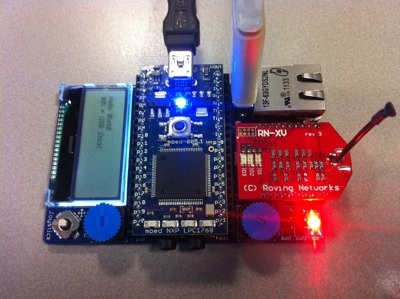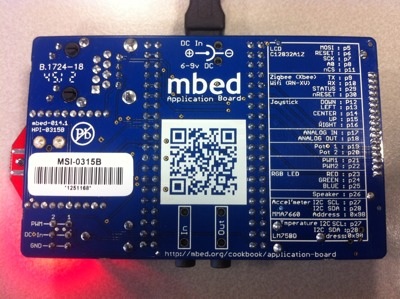Hi All,
As there was a little debate about this, I thought it was worth giving my perspective.
Q: Why is it so expensive?
A: Because there is a lot of stuff on it. Have a look at the parts in a distributor catalogue (at 1,000+), the cost of PCB and assembly, how much shipping costs, and you'll arrive at the same number. Its an enabler, not a money-spinner.
Q : Why is it designed that way?
A: I'd claim its a good implementation for the problem it was trying to solve. One criticism is that it isn't very flexible. Thank you for noticing! That's exactly what I was hoping for!
With flexibility comes options, and the ability to get things wrong. As with the mbed NXP LPC1768 itself, every Apps Board owner has the same piece of hardware in front of them, so users can share code and be confident that results can be replicated.
You can expand it a little with jumper wires, but that's really not what this board is about. If your prototype needs lots of flexibility, then solder-less breadboard is far better suited!
Q: Who is it for?
A: Whoever can benefit from having a fixed, reliable, well supported set of features on a convenient board to make experimentation easy!
Its particularly good for workshop and class environments, maybe where the flexibility and final design isn't the focus. The board has been designed to fit as closely as possible with the mbed Textbook by Rob Toulson and Tim Wilmshurst, and it also fits in with the associated Course Notes.
So if you're trying to C++, or how to communicate over I2C, its quite convenient to have a reference platform you can be confident in, rather than question your wiring when it doesn't work.
While the screen isn't a super high definition, colour TFT, its perfectly usable - Its a trade off we've had to make, and I think we've got it about right for the target audience.
I think the summary is that it all comes down to perspective. If you want complete feasibility, or are looking for a really cheap platform, it may not be for you. If you see the value in a a well supported, fixed function platform, its might look like a bargain, depending on what you want it for.
Either way, I'm proud of it, and hope that everyone who has bought one (they seems to be selling well!) has as much fun with it as I have had making it exist!
Cheers,
Chris









How connect this board to the robot ?